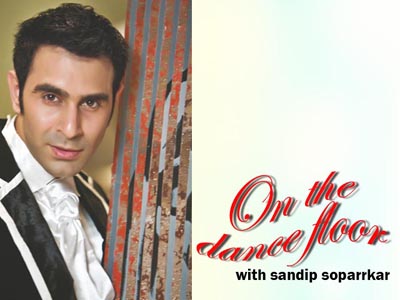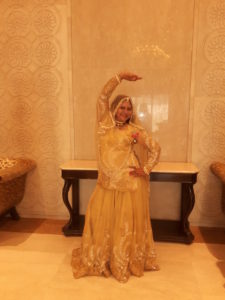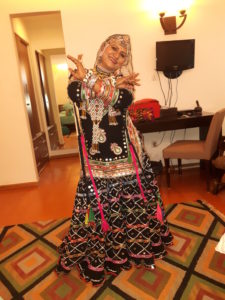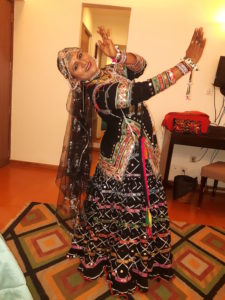Gulabo Sapera, a rare gem of India

Today, I am going to take you into the life of a pathbreaking dancer who, in 1960, was buried alive just one hour after her birth by her community and village seniors. According to them, her fault was that she was born a girl though later she was fortunate to be rescued by her aunt. She came from a traditional and very orthodox nomadic Kalbeliya community. Kalbeliyas are basically snake charmers’ community who travel from one place to another and their income is mainly from prayer offered to snakes and dealing in Ayurvedic medicines.
I am talking about the legendary Kalbeliya dancer, Gulabo Sapera who was fed with the milk meant for the snakes as that was all her extremely poor snake charmer parents could afford. She was never allowed to study nor work and was made to remain in ghungat all the time as a girl child in their community was looked down upon. Those of you who are fans and admirers of the musical work of Titi Robin would have not missed Gulabo Sapera as she is actively involved in that. Not just that Gulabo Sapera’s life is also featured in a French book written by Thierry Robin and Véronique Guillien titled Gulabi Sapera danseuse gitane du Rajasthan means Gulabo Sapera, the gypsy dancer from Rajasthan.
I feel privileged to be talking to Gulaboji who, in spite of all odds, has risen to a level that many of us can only dream of. Here are a few questions which I asked the dynamic dancer who I feel has a body like a rubber band — she can move it, twist it and turn it like no one can and may be no one will:
How did Kalbeliya became a part of your life?
I was a dancer from birth. My mother tells me I would never play with other children. Rather I would always be dancing to the music of snake charmer’s flute. Once I was dancing at the Pushkar Mela and a Rajasthan Tourism officer happened to see my dance and said, “Tumhari toh haddiyan he nahin hain (you have no bones in your body). The officer offered me to dance for foreign guests in return of money, which my family later agreed to and at the age of 10, in 1981, I did my first stage performance. For the show, my father gifted me ghungroos that day with bells in my feet and draped a long fully covered ghungta. I fearlessly danced my heart out as if the stage and the snake charmer music was talking to me. That day the dignitaries present cheered like never before and called my moves Kalbeliya ka Sapera. It has been over three decades and now, I feel proud to say Kalbeliya dance has arrived.
Your community did not allow women to dance then who helped you move ahead?
Maharani Gayatri Devi of Jaipur and a few other royals explained and encouraged my family to allow me to pursue my snake charmers’ dance. In spite of it being not accepted well by my community. Thanks to Maharaniji, I have not left dance and dance has not left me.
When did you get your due recognition you think?
In 1985, I was invited to dance at the prestigious Indian festival in Washington DC, a day before my tour, my father passed away. With a heavy heart and tears rolling down under my long ghungta, I danced at the festival and when I returned to India, people of my community welcomed me with open arms and asked me to train other women too in Kalbeliya. To me, this warm welcome with a new changed attitude was the recognition of my art.
With so many dance forms coming into India, what is the folk dance scene?
In 1980s and 1990s, folk dances were very popular. I remember dancing with different folk dancers on the same stage. But after 2005, there was a big change. Today, reality shows only show Hip Hop and Contemporary. Folk is rarely there. I have nothing against international dance forms but I believe if we through our films and television we can’t promote our own culture and traditions, then who will?
Do you think our folk dances are more popular in the West?
I have loads of international students and I feel humbled that their government offers them scholarships to come to learn under my guidance. These students go back to their respective countries and perform Kalbeliya professionally, in turn, helping us popularise our rich old culture in the West. Yes, somewhere the West does have a softer corner for our cultural dances compared to us here in India.
Which other folk dances you have expertise in? And what is the future you think?
I only specialise in Kalbeliya and proudly teach the same. I do not want this art to die with me so I try my best to teach it to as many people as possible. I wish to thank Government of India and the Padma award committee for honouring me with the fourth highest civilian award Padma Shri in 2016 because after the honour, the love in people’s heart towards Kalbeliya has risen to a completely new level and dancers have started to believe that Kalbeliya can surely be a respected profession.
Did your stint in Bigg Boss Season 5 bring more light to Kalbeliya?
Yes, it did add a lot to my art. At first, I was not keen to participate but my children explained me the advantage of a show as big as Bigg Boss. People started to recognise me and called me Bigg Bosswali Gulabo. Let me be honest, post my television appearance in 2011, I have performed for loads of shows and events with the same tag.
You have achieved worldwide recognition, What next ?
I have dedicated my life to Kalbeliya through shows and workshops all over the world. But my dream is to open a dance academy at the same place where I performed first ‘Pushkar’. My dance academy will not only teach Kalbeliya but will also teach Ayurveda and have a museum that will show large amount of Indian handicrafts, traditional instruments, clothes and more.
An artiste like Gulabo Sapera is a rare gem of India. Her love for Kalbeliya can be seen not just in her breathtaking performances but even in the way she speaks. Let us all stand up and bow down to her as she has proved that passion and sincerity can not only change the future of a person but can also bring about a change in the mindsets of the society we live in. Hats off! Gulabo Sapera. Hats off!
Sandip Soparrkar is a World Book record holder and a well known Ballroom dancer and a Bollywood choreographer who has been honoured with National Achievement Award and two National Excellence Awards by the Govt of India. He can be contacted on sandipsoparrkar06@gmail.com




